The CWP will utilize the following types of stormwater best management practices.
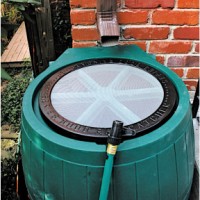
Rain Barrels
Rain barrels are containers used to collect a portion of the rainwater that flows from the rooftop and store it for uses such as lawn and garden irrigation. By capturing water from downspouts that would otherwise discharge onto a paved surface and flow into a storm drain, rain barrels can reduce the amount of stormwater runoff and pollutants reaching local waterways. Saving and reusing rainwater not only helps protect the environment, it reduces energy and water bills.
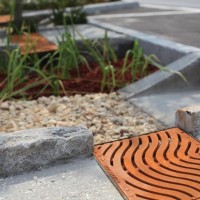
Pavement Removal
One of the most effective ways to mitigate water pollution and restore the health of our local waterways is to reduce the amount impervious surfaces in urban environments. Large expanses of impervious area are associated with increased stream bank erosion and decreased water quality. Pavement removal is the replacement of impervious surfaces, such as asphalt and concrete, with grass or native plants or with permeable pavement.
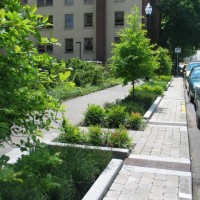
Permeable Pavement
When rainwater falls on conventional pavement such as asphalt and concrete, it runs off the impervious surface as stormwater runoff. Permeable pavement has small openings that allow stormwater to alter through to the soil below, replenishing the groundwater and improving water quality. Appropriate use for permeable pavement includes walkways, patios, driveways, parking lots, civic plazas, and other low-traffic areas.
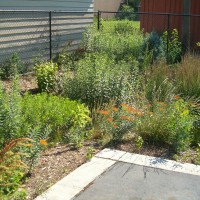
Rain Gardens
A rain garden is a planted shallow depression that uses water-tolerant native plants to soak up stormwater owing from downspouts or hard (impervious) surfaces, such as driveways or sidewalks. Rain gardens allow water to slowly seep into the ground, reducing the amount of water that ows directly into the nearest storm drain, creek, or river. Rain gardens typically consist of an absorbent soil mix, a mulch layer, and plants such as shrubs, grasses, and owering plants.
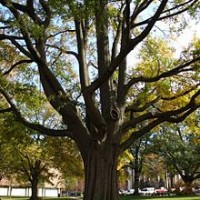
Urban Tree Canopy
The canopy of a tree is the area of leaves and branches that create shade under the tree. Tree canopies reduce the amount of sunlight and rainfall reaching the ground. Trees in urban environments are particularly important for intercepting rainfall before it becomes stormwater runoff. In addition to water quality bene ts, trees help clean the air by producing oxygen, intercepting airborne particulates, and reducing smog while removing greenhouse gases from the atmosphere.
